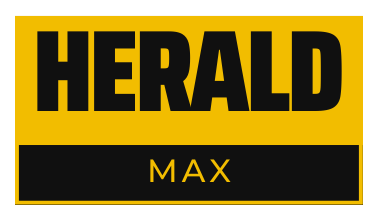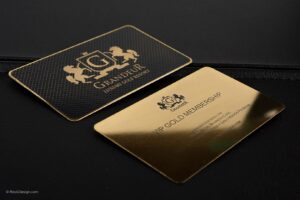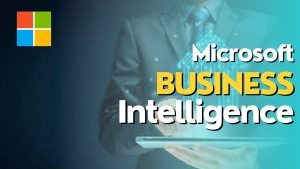
Preparing for a job interview is a comprehensive process that goes beyond simply updating your resume and dressing sharply. To truly stand out and excel in the competitive world of job hunting, it’s essential to approach the interview with a well-thought-out strategy.
In this article, we’ll guide you through a step-by-step how to prepare for a job interview, covering everything from researching the company and understanding the job description to acing the interview itself and effectively following up afterward. By the time you finish reading, you’ll be armed with the knowledge and techniques needed to navigate each stage of the job interview process with confidence and poise. Let’s embark on this journey towards interview success together.
1. Research the Company
Researching the company you’re interviewing with is a crucial first step in how to prepare for an interview. It not only helps you understand the organization better but also demonstrates your genuine interest and commitment to the potential employer. In this section, we’ll delve into the key aspects of researching the company effectively.

Company Culture
Understanding the company’s culture is essential as it enables you to tailor your responses and demeanor to align with their values and expectations.
How to Research Company Culture
- Company Website:
Start by visiting the company’s official website. Look for sections that describe their culture, mission, and values. This often provides valuable insights into what they prioritize. - Employee Reviews:
Websites like Glassdoor and LinkedIn can offer employee reviews and insights into the company culture. Pay attention to recurring themes in these reviews. - Social Media:
Explore the company’s social media profiles. Posts, comments, and interactions can give you a sense of their culture and engagement with employees and customers. - Networking:
If you have contacts within the company, reach out and ask about the company culture. Personal anecdotes and experiences can be enlightening.
Mission and Vision
Understanding the company’s mission and vision statement helps you align your career goals and aspirations with their overarching purpose.
How to Research Mission and Vision
- Company Website:
These statements are typically found on the company’s “About Us” or “Our Story” page. Analyze these statements and consider how your own career goals align with them. - Annual Reports:
If available, review the company’s annual reports. These documents often provide insights into their long-term goals and strategies. - News Articles:
Look for news articles or press releases related to the company’s mission and vision. Recent achievements or changes may indicate shifts in their direction.
Recent News and Developments
Being informed about the company’s recent news, achievements, and challenges demonstrates that you’re up-to-date and genuinely interested.
How to Stay Informed
- Google News Alerts:
Set up Google News alerts for the company’s name. This way, you’ll receive notifications about recent news articles related to the organization. - Company Blog:
Explore the company’s blog if they have one. It often contains updates, success stories, and insights into their industry. - Industry Publications:
Read industry-related publications to get a broader perspective on the company’s position and reputation within the field.
2. Understand the Job Description
One of the critical aspects of preparing for a job interview is gaining a deep understanding of the job description. This document serves as your roadmap for tailoring your responses and showcasing your qualifications effectively. In this section, we’ll explore the steps to comprehensively analyze and make the most of the job description.

Key Responsibilities
Understanding the key responsibilities associated with the position is essential to demonstrate your suitability for the role.
How to Analyze Key Responsibilities
- Thorough Reading:
Begin by reading the job description carefully. Highlight or make notes about the specific tasks and responsibilities mentioned. - Keywords:
Identify keywords or action verbs used in the description. These words often indicate the essential skills and tasks required. - Prioritization:
Rank the responsibilities in terms of their importance and relevance to the role. Focus on those that are central to the position. - Matching Your Skills:
Compare the highlighted responsibilities to your skills and experiences. Be prepared to discuss how your background aligns with these duties.
Qualifications
The qualifications section outlines the necessary skills, experience, and education expected from the ideal candidate.
How to Evaluate Qualifications
- Minimum vs. Preferred:
Distinguish between the minimum qualifications and the preferred qualifications. Focus on meeting or exceeding the minimum requirements. - Skill Assessment:
Assess your own skills and qualifications in relation to the job requirements. Be honest about areas where you may have gaps and how you plan to address them. - Relevant Experience:
Highlight your relevant work experience, certifications, or training that directly match the qualifications sought in the job description. - Customize Your Resume:
Tailor your resume to emphasize qualifications that align with the job requirements. Use specific examples to showcase your abilities.
Soft Skills and Cultural Fit
In addition to technical qualifications, many job descriptions mention soft skills and attributes that contribute to a positive work environment.
Identifying Soft Skills and Cultural Fit
- Soft Skills:
Look for mentions of soft skills such as communication, teamwork, problem-solving, and adaptability. Be ready to provide examples of how you’ve demonstrated these skills in previous roles. - Cultural Fit:
Some job descriptions subtly indicate the type of personality or work ethic that fits well within the company culture. Research the company’s culture to ensure alignment.
3. Practice Common Interview Questions
Practicing common interview questions is a vital aspect of preparing for a job interview. It helps you refine your responses, boost your confidence, and ensure you can effectively communicate your qualifications and experiences. In this section, we’ll explore the key interview questions you’re likely to encounter and how to approach them.

Behavioral Questions
Behavioral questions are designed to assess how you’ve handled specific situations in the past. They often begin with phrases like “Tell me about a time when…” or “Give me an example of…”
How to Prepare for Behavioral Questions
- Identify Key Competencies:
Review the job description and identify the key competencies or skills required. Prepare examples from your past experiences that demonstrate these competencies. - Use the STAR Method:
Structure your responses using the STAR method (Situation, Task, Action, Result). Start by describing the situation, then the task or challenge, the actions you took, and the positive results achieved. - Diverse Scenarios:
Prepare for a variety of scenarios, including teamwork, problem-solving, conflict resolution, and leadership. Be ready to adapt your examples to different types of questions.
Strengths and Weaknesses
Discussing your strengths and weaknesses requires self-awareness and the ability to present yourself in a positive light while acknowledging areas for improvement.
How to Discuss Strengths and Weaknesses
- Strengths:
Choose strengths that are relevant to the job and back them up with specific examples. Highlight how these strengths will benefit the employer. - Weaknesses:
Select a weakness that is not a core requirement for the job. Discuss the steps you’ve taken or are taking to address this weakness, demonstrating your commitment to self-improvement. - Avoid Clichés:
Avoid clichéd responses like “I’m a perfectionist” for strengths and “I work too hard” for weaknesses. Be genuine and thoughtful.
Why You Want the Job
Employers often ask why you want the specific job and how it aligns with your career goals.
How to Explain Why You Want the Job
- Research:
Mention specific aspects of the company, role, or industry that appeal to you. Connect these to your career aspirations. - Passion:
Express genuine enthusiasm for the position and emphasize how it matches your skills and interests. - Long-Term Vision:
Discuss your long-term goals and how this job is a stepping stone toward achieving them.
4. Develop Your Elevator Pitch
An elevator pitch is a concise, compelling introduction that sums up who you are, what you do, and what you’re looking for in a job. Crafting a strong elevator pitch is essential for making a memorable first impression during a job interview. In this section, we’ll explore the importance of the elevator pitch and how to create one that leaves a lasting impact.
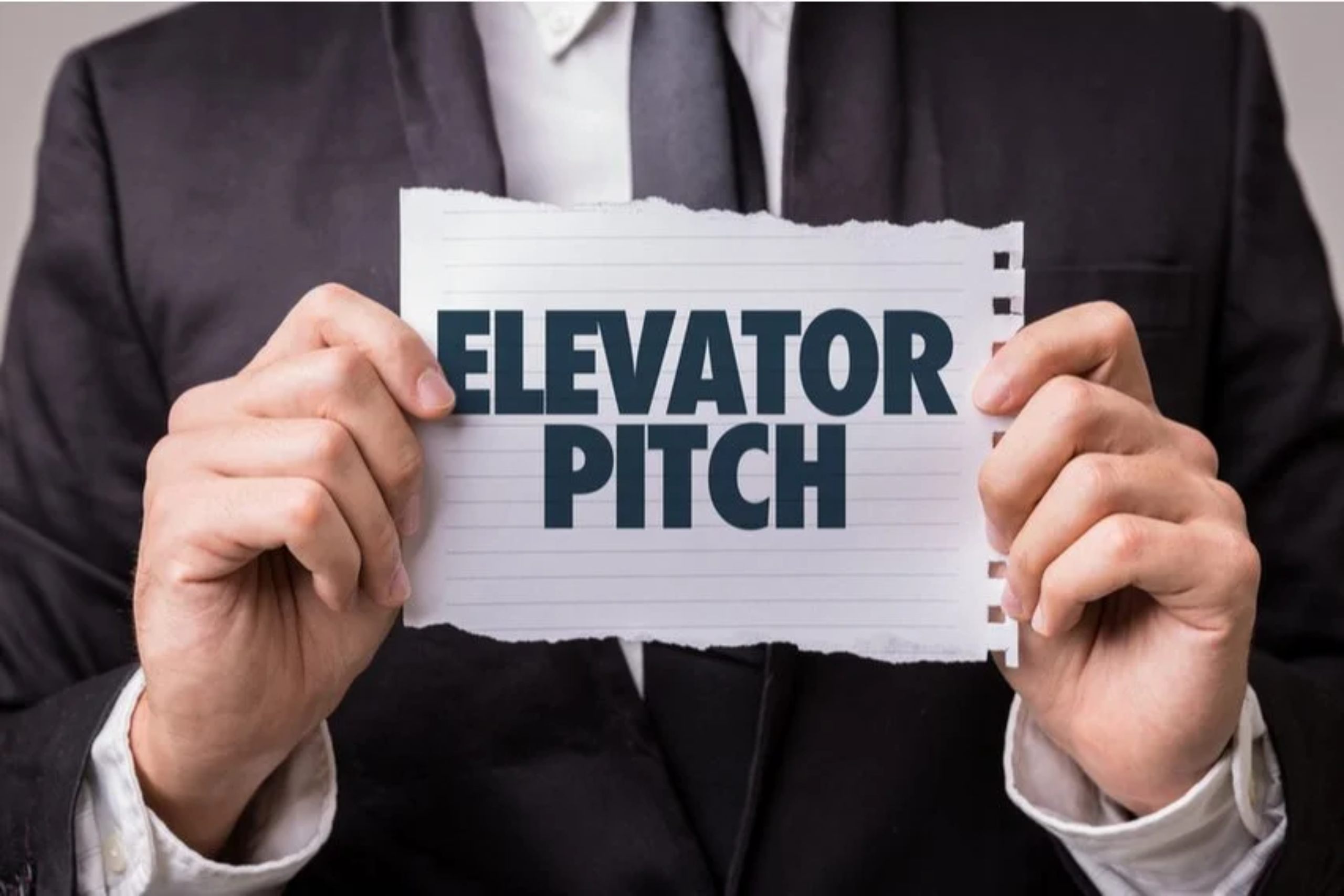
What is an Elevator Pitch?
An elevator pitch is a brief, well-rehearsed statement that you can deliver in the time it takes to ride an elevator, typically around 30 seconds to one minute. It’s an opportunity to introduce yourself effectively and engage your interviewer from the very beginning.
Why It Matters
- First Impressions:
Your elevator pitch is often the first thing the interviewer hears. A strong one can set a positive tone for the entire interview. - Concise Communication:
It forces you to convey your key qualifications, skills, and goals succinctly. - Differentiation:
It distinguishes you from other candidates by showcasing your unique strengths and interests.
Crafting Your Elevator Pitch
Elements of an Effective Pitch
- Introduction:
Start with your name and a friendly greeting. For example, “Hello, I’m [Your Name]. It’s a pleasure to meet you.” - Professional Summary:
Highlight your current or most recent position and your expertise. For instance, “I’m a seasoned [Your Current Job Title] with [X] years of experience in [Your Industry/Field].” - Achievements:
Mention a key accomplishment or project that demonstrates your skills and contributions. Quantify your achievements whenever possible. For example, “I recently led a team that increased revenue by 20% in just six months.” - Relevance:
Explain why you’re interested in the company or role you’re interviewing for. Show that you’ve done your homework and that you’re genuinely excited about the opportunity. - Closing:
Conclude with an invitation for further discussion or questions, such as, “I’d love to learn more about your company and how I can contribute to your team.”
Tailoring Your Pitch
- Customize your elevator pitch for each interview. Highlight aspects of your background and skills that align with the specific job and company.
- Practice your pitch until it feels natural. Avoid sounding rehearsed; aim for a conversational tone.
Examples and Tips
Example 1: Entry-Level Candidate
“Hi, I’m [Your Name]. I recently graduated with a degree in [Your Degree], and I’m passionate about [Relevant Industry]. During my internships at [Previous Companies], I developed strong skills in [Key Skills], and I’m excited to bring my enthusiasm and fresh perspective to a dynamic team like yours.”
Example 2: Experienced Professional
“Good [Morning/Afternoon], I’m [Your Name], a [Your Current Job Title] with over [X] years of experience in [Your Industry]. I’ve consistently delivered results, such as [Notable Achievement], and I’m drawn to your company’s innovative approach to [Specific Industry Trend]. I’m eager to explore how my expertise can contribute to your continued success.”
Tips
- Practice in front of a mirror or with a friend to ensure your pitch flows smoothly and confidently.
- Keep it concise and focused, avoiding unnecessary jargon.
- Be adaptable. Depending on the interview setting, you may need to adjust your pitch to fit the conversation.
5. Dress Appropriately
Your appearance plays a significant role in making a positive impression during a job interview. Dressing appropriately demonstrates professionalism, respect for the company’s culture, and your understanding of the importance of the occasion. In this section, we’ll explore how to choose the right attire for your job interview.
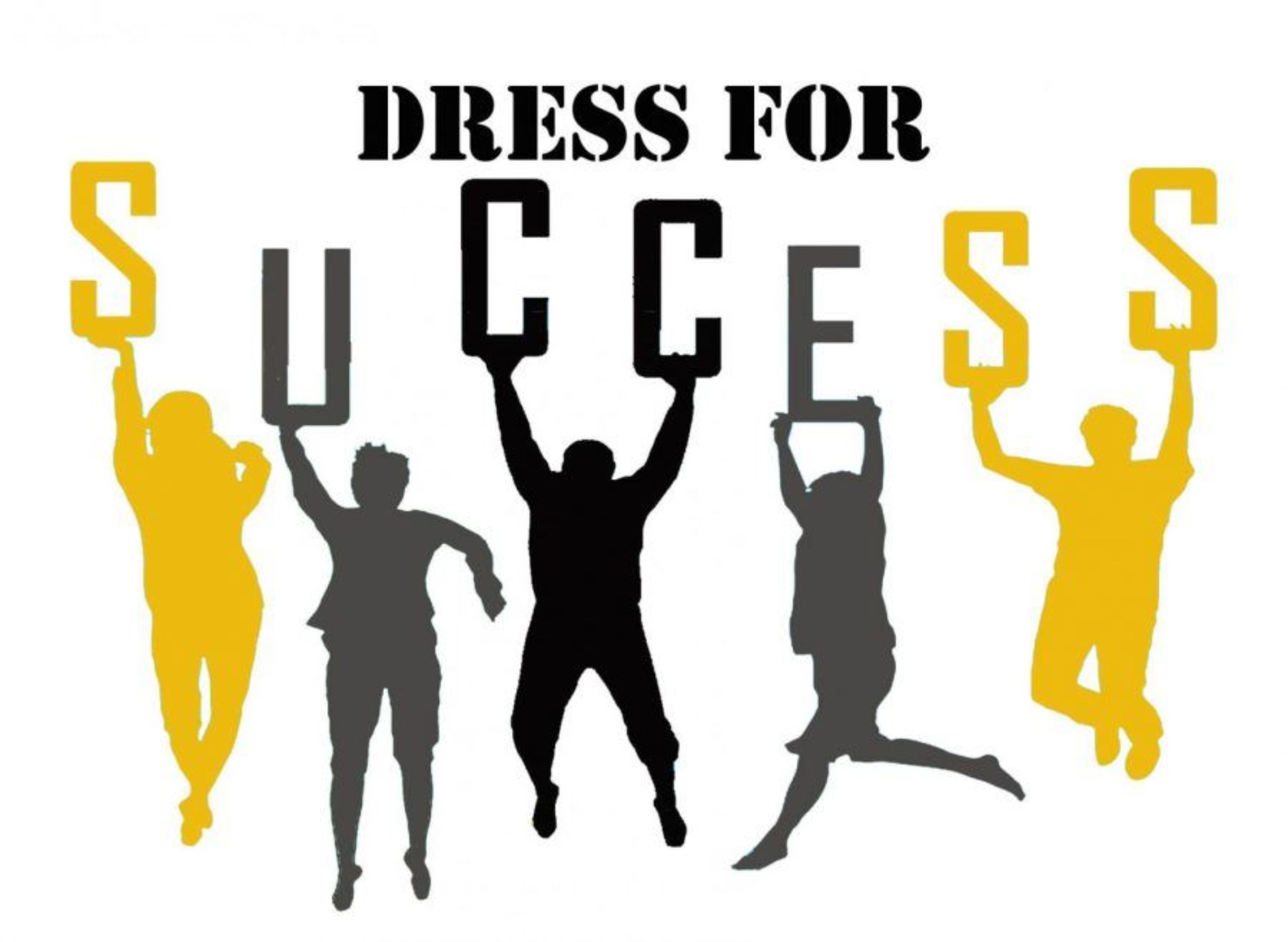
Research the Company’s Dress Code
Before selecting your interview outfit, it’s essential to understand the company’s dress code. Different industries and organizations may have varying expectations when it comes to attire.
How to Research Dress Code
- Company Website:
Check the company’s website for any information on dress code guidelines or employee photos that can offer visual cues. - Social Media:
Look at the company’s social media profiles to get a sense of how current employees typically dress. - Networking:
If you have contacts within the company, don’t hesitate to ask them about the dress code. They can provide valuable insights.
General Guidelines for Interview Attire
While dress codes can vary, some general guidelines can help you make appropriate choices for your interview outfit.
Men’s Attire
- Suit:
A well-fitted, conservative suit in a neutral color (such as navy, black, or gray) is often a safe choice. - Shirt:
Wear a clean, pressed, long-sleeved dress shirt in a light color. A white shirt is a classic option. - Tie:
Choose a simple, silk tie that complements your suit. Avoid flashy patterns or bright colors. - Shoes:
Opt for polished, closed-toe dress shoes that match your suit. - Accessories:
Keep accessories minimal, such as a leather belt and a watch.
Women’s Attire
- Suit:
A tailored pantsuit or skirt suit in a conservative color is a professional choice. - Blouse:
Wear a conservative blouse or dress shirt under your suit jacket. - Shoes:
Choose closed-toe, low-heeled shoes that are comfortable for walking and standing. - Jewelry:
Keep jewelry minimal and understated. Avoid large, distracting pieces. - Makeup and Nails:
Keep makeup and nail polish neutral and subtle.
Grooming and Hygiene
Beyond clothing, grooming and hygiene are crucial aspects of your overall appearance.
- Hair:
Ensure your hair is clean, well-groomed, and neatly styled. - Facial Hair:
If you have facial hair, keep it trimmed and well-maintained. - Nails:
Trim and clean your nails, and avoid overly long or flashy nail designs. - Fragrance:
Use a light, neutral fragrance or skip it altogether to avoid overwhelming scents.
Final Preparations
Before the interview day, take time to make sure your outfit is ready.
- Try It On:
A day or two before the interview, try on your entire outfit to ensure everything fits well and is in good condition. - Clean and Pressed:
Ensure that your clothing is clean, ironed, and free from wrinkles. - Prepare Backup:
Have a backup outfit ready in case of unexpected mishaps.
6. Prepare Questions
Asking thoughtful questions during a job interview is not just about demonstrating your interest; it’s also a valuable opportunity to gather information about the company and the role. In this section, we’ll discuss the importance of preparing questions and provide guidance on crafting inquiries that leave a positive impression.

Why Asking Questions Matters
Asking questions during an interview serves several essential purposes:
Demonstrates Interest
- Engagement:
It shows that you’re actively engaged in the conversation and genuinely interested in the position and company. - Research:
It reinforces the impression that you’ve done your homework by researching the company and the role.
Gathers Information
- Company Insights:
It allows you to gain valuable insights about the company culture, team dynamics, and expectations. - Clarification:
It gives you the chance to seek clarification on aspects of the role or company that may not be clear from the job description alone.
Types of Questions to Prepare
When preparing questions to ask during the interview, consider a mix of different types to cover a broad range of topics:
Clarifying Questions
- Role Responsibilities:
Seek clarification on specific responsibilities or projects associated with the role. - Team Structure:
Ask about the team structure and how your role fits within it.
Company Culture and Values
- Company Culture:
Inquire about the company’s culture and how it fosters a positive work environment. - Values and Mission:
- Ask about the company’s core values and how they influence decision-making.
Future Opportunities
- Growth Potential:
Explore opportunities for professional growth and career advancement within the organization. - Challenges:
Ask about current challenges the company is facing and how your role might contribute to overcoming them.
Interviewer’s Experience
- Interviewer’s Background:
Ask about the interviewer’s own experience with the company and their perspective on the team and role. - Expectations:
Seek insights into what the hiring manager expects from the ideal candidate.
Crafting Your Questions
When crafting your questions, keep the following principles in mind:
Be Specific
- Tailor Questions:
Customize your questions to the specifics of the role and the company. Avoid generic inquiries that could apply to any job.
Show Enthusiasm
- Express Interest:
Phrase your questions in a way that conveys your enthusiasm for the position and your eagerness to contribute.
Open-Ended
- Open-Ended:
Frame questions as open-ended rather than ones that can be answered with a simple “yes” or “no.” This encourages more detailed responses.
Examples of Questions
Here are some examples of questions you can ask during an interview:
- “Can you tell me more about the day-to-day responsibilities of this role?”
- “How would you describe the company’s approach to professional development and career growth?”
- “What do you think sets successful employees at [Company Name] apart from others?”
- “What are the key initiatives or projects the team is currently working on?”
- “How does the company foster diversity and inclusion in the workplace?”
7. Mock Interviews
Mock interviews are a valuable tool in your job interview preparation toolkit. They offer you a chance to practice your responses, receive feedback, and build confidence before the actual interview. In this section, we’ll explore the importance of mock interviews and how to make the most of them.
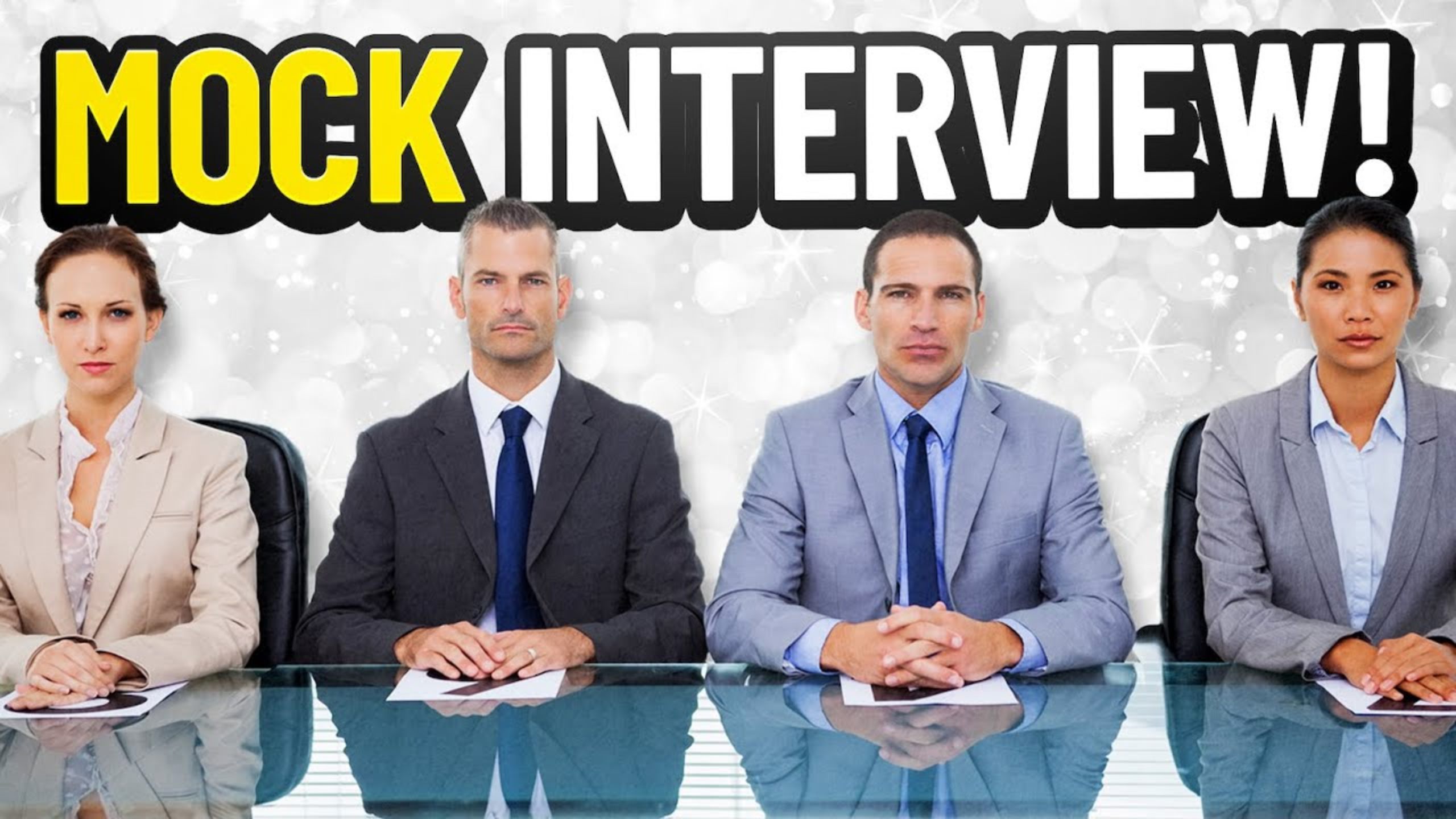
What Are Mock Interviews?
A mock interview is a simulated job interview conducted in a practice setting. It typically involves a mock interviewer who asks you common interview questions and evaluates your responses. Mock interviews can be conducted with friends, family members, mentors, or through professional services.
Why Mock Interviews Matter
- Practice:
They allow you to practice your interview skills, including your responses, body language, and overall presentation. - Feedback:
Mock interviewers can provide constructive feedback on your answers, helping you identify areas for improvement. - Confidence:
Repeated practice helps boost your confidence and reduces nervousness during the actual interview.
How to Conduct Mock Interviews
1. Choose Your Mock Interviewer
- Friend or Family Member:
A trusted friend or family member can serve as your mock interviewer, offering a comfortable practice environment. - Mentor or Career Coach:
A mentor or career coach with industry knowledge can provide valuable feedback and insights. - Professional Services:
Some organizations and career centers offer professional mock interview services with experienced interviewers.
2. Set Up a Realistic Scenario
- Dress the Part:
Wear the same attire you plan to wear to the real interview. This helps you get accustomed to the outfit and feel more confident. - Simulate the Interview Setting:
Conduct the mock interview in a quiet, professional space with minimal distractions. - Time Constraints:
Stick to the time constraints of a typical interview, which is usually 30-60 minutes.
3. Prepare Interview Questions
- Common Questions:
Prepare a list of common interview questions based on the job description and role expectations. - Industry-Specific:
Include questions specific to your industry or field.
4. Conduct the Mock Interview
- Take it Seriously:
Approach the mock interview with the same seriousness and professionalism you would bring to a real interview. - Record or Have a Observer:
Record the mock interview if possible, or have an observer take notes on your responses and performance.
5. Receive Feedback
- Review and Reflect:
After the mock interview, review your performance and reflect on areas where you did well and where you need improvement. - Feedback Session:
Schedule a feedback session with your mock interviewer or observer to discuss strengths and areas for development.
6. Repeat the Process
- Practice Regularly:
Don’t limit yourself to one mock interview. Practice multiple times to refine your skills. - Adapt and Improve:
Use feedback from each mock interview to adapt and improve your responses.
8. Plan Logistics
Planning the logistics of your job interview is essential to ensure everything runs smoothly on the big day. From knowing the interview location to organizing your materials, attention to detail in this phase is critical. In this section, we’ll explore the key logistical considerations for a successful job interview.
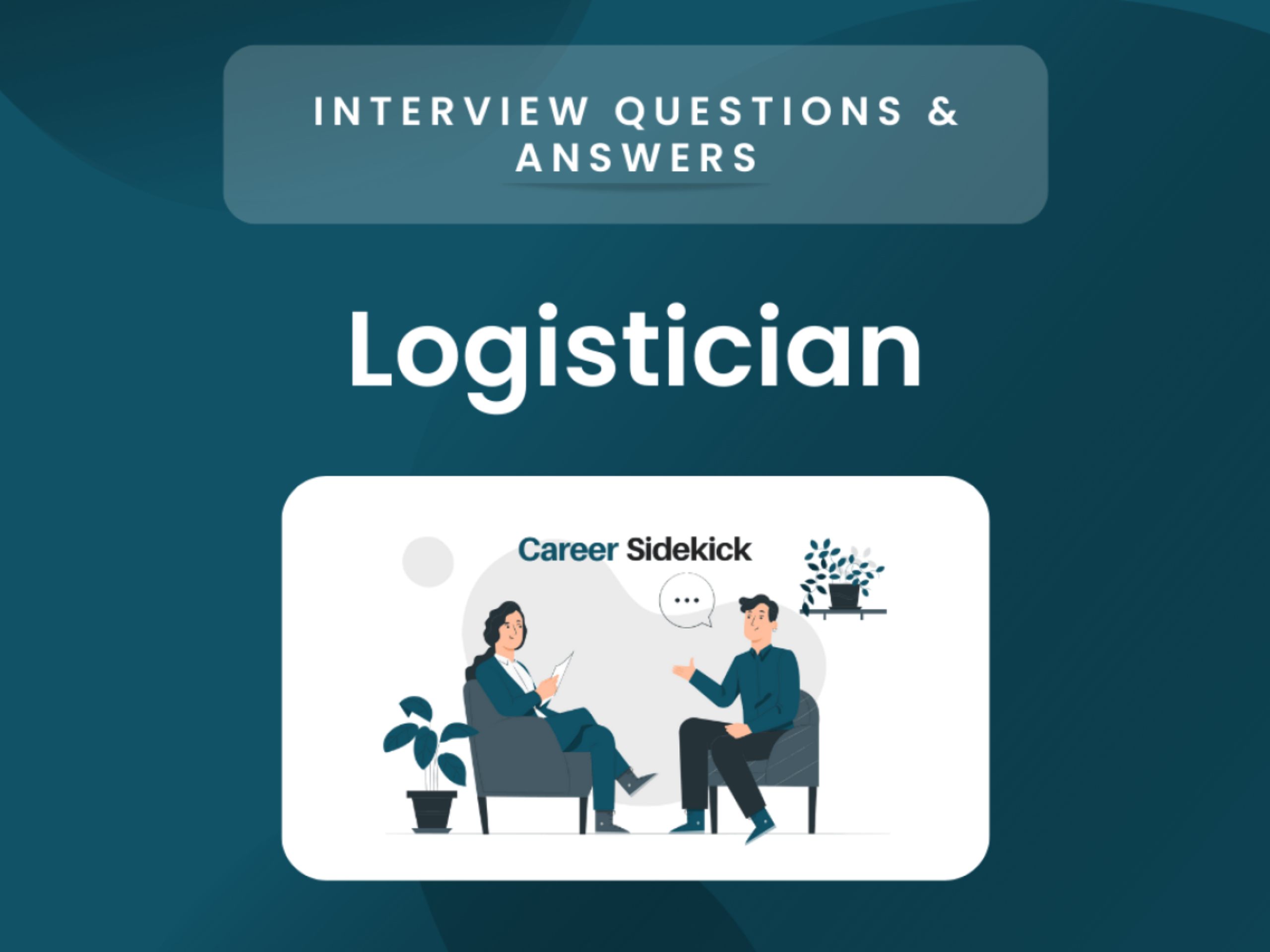
Know the Interview Location
Understanding the interview location and its accessibility is vital to avoid last-minute stress.
How to Determine the Location
- Check the Invitation:
Review the interview invitation or confirmation email for the interview address. It should provide the specific location and any additional instructions. - Online Maps:
Use online maps or navigation apps to familiarize yourself with the location, including nearby parking options or public transportation. - Test the Route:
If possible, visit the interview location in advance to assess traffic conditions and potential delays.
Plan Your Transportation
Decide on your mode of transportation and make arrangements accordingly.
Transportation Options
- Personal Vehicle:
If you’re driving, ensure your vehicle is in good condition, and plan for parking arrangements. - Public Transportation:
If you’re using public transport, check schedules and routes. Leave with plenty of time to spare. - Rideshare Services:
If using a rideshare service, have the app ready, and consider scheduling your ride in advance.
Allow for Extra Time
Arriving early is a golden rule for job interviews.
Timing Considerations
- Arrival Time:
Aim to arrive at the interview location at least 15-30 minutes early. This allows for any unexpected delays. - Wait Time:
Plan for potential waiting time upon arrival, as interviews might not start immediately.
Organize Your Materials
Having the necessary documents and materials ready in an organized manner is crucial.
Essential Materials
- Multiple Copies of Resume:
Print multiple copies of your resume to provide to interviewers or for reference. - Notepad and Pen:
Carry a notepad and pen for taking notes during the interview. - Identification:
Bring a valid photo ID, as some companies may require it for security purposes.
Prepare for Interviews on Video Platforms
If the interview is conducted online, additional logistics must be considered.
Technical Setup
- Equipment:
Ensure your computer or device, webcam, microphone, and internet connection are in working order. - Software:
Download and test any interview platform or software required in advance. - Lighting and Background:
Set up proper lighting and a clutter-free background for your video interview.
9. Manage Stress
Job interviews can be nerve-wracking, but managing stress is essential to present your best self during the interview. In this section, we’ll explore strategies to help you stay calm and composed before and during your job interview.
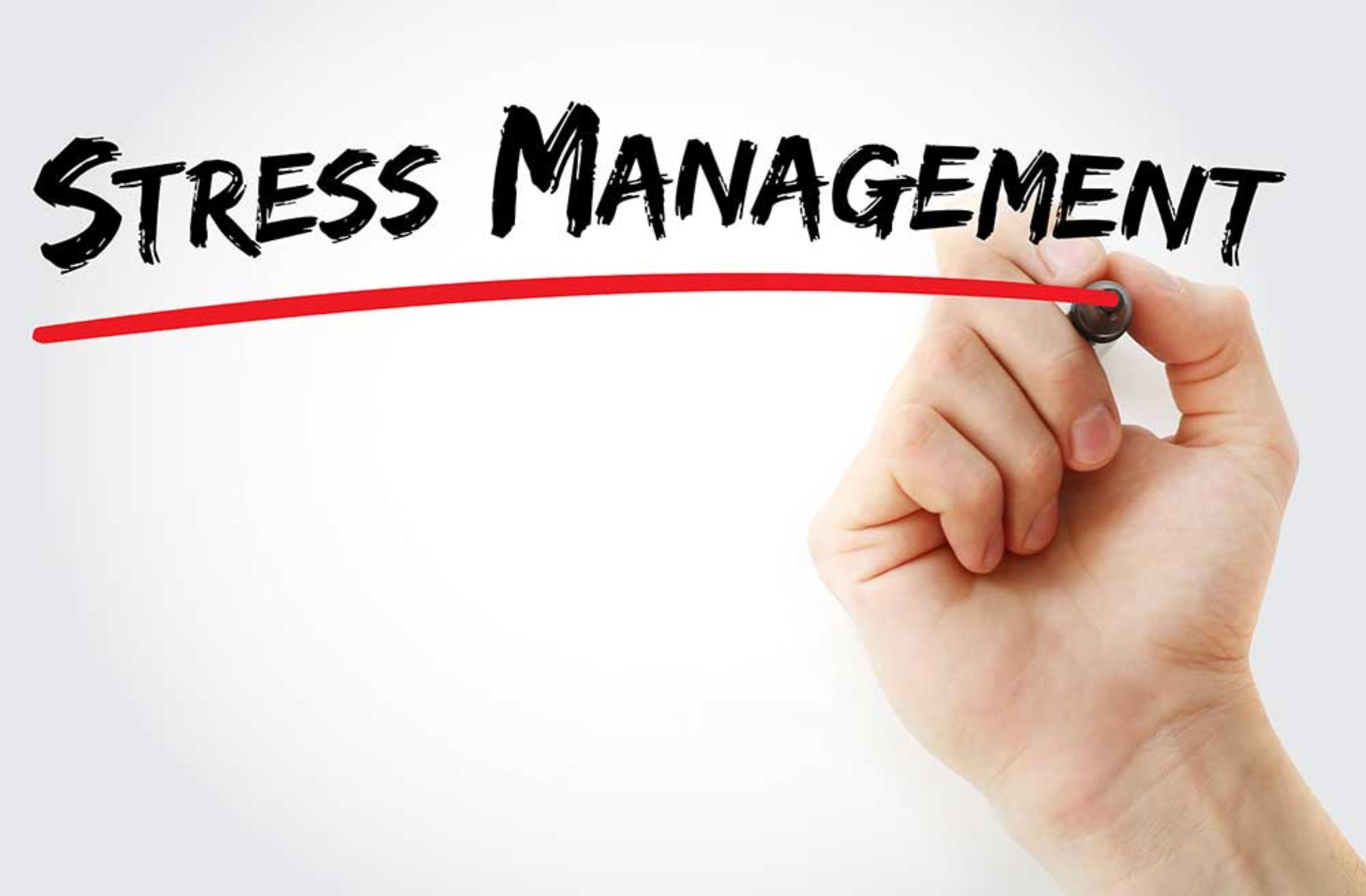
Understand Interview Anxiety
Recognizing the common signs of interview anxiety is the first step in managing it effectively.
Common Symptoms
- Nervousness:
Feeling jittery or anxious leading up to the interview. - Racing Thoughts:
Your mind may race with worries about the interview. - Physical Symptoms:
Symptoms like sweaty palms, a racing heart, or stomach butterflies can occur.
Prepare Thoroughly
One of the best ways to combat interview anxiety is through thorough preparation.
How Preparation Helps
- Confidence:
Preparation boosts your confidence in your abilities and knowledge. - Knowledge:
Knowing your resume, the company, and the role inside-out reduces anxiety. - Practice:
Mock interviews help you feel more at ease with the interview format.
Positive Self-Talk
Replace negative thoughts with positive affirmations.
Self-Talk Techniques
- Visualize Success:
Imagine yourself walking into the interview room confidently and acing the conversation. - Affirmations:
Repeat positive affirmations like “I am well-prepared and capable” to boost self-confidence.
Breathing and Relaxation Techniques
Practicing deep breathing and relaxation techniques can calm your nerves.
Techniques to Try
- Deep Breathing:
Take slow, deep breaths to calm your nervous system. - Progressive Muscle Relaxation:
Tense and release different muscle groups to reduce physical tension.
Time Management
Managing your time effectively on interview day reduces stress.
Time Management Tips
- Early Start:
Begin your day with plenty of time to spare, avoiding last-minute rushes. - Buffer Time:
Allow extra time for unexpected delays in transportation or navigation.
Maintain a Healthy Lifestyle
A balanced lifestyle contributes to stress management.
Healthy Habits
- Sleep:
Prioritize getting a good night’s sleep before the interview. - Diet:
Eat a nutritious meal to sustain your energy levels. - Exercise:
Engaging in physical activity can reduce stress and boost your mood.
Focus on the Present
Avoid dwelling on future outcomes during the interview.
Mindfulness Techniques
- Stay Present:
Concentrate on the current moment rather than worrying about what might happen. - Mindful Breathing:
Pay attention to your breath to stay grounded.
Seek Support
Talking to someone about your concerns can be reassuring.
Sources of Support
- Friends or Family:
Share your feelings with someone you trust for encouragement. - Mentor or Career Coach:
Seek guidance from a mentor or career coach who can offer valuable insights.
10. Follow-Up
The interview doesn’t end when you walk out of the interview room. Proper follow-up is a crucial step in the job interview process. In this section, we’ll discuss the importance of follow-up and how to do it effectively.
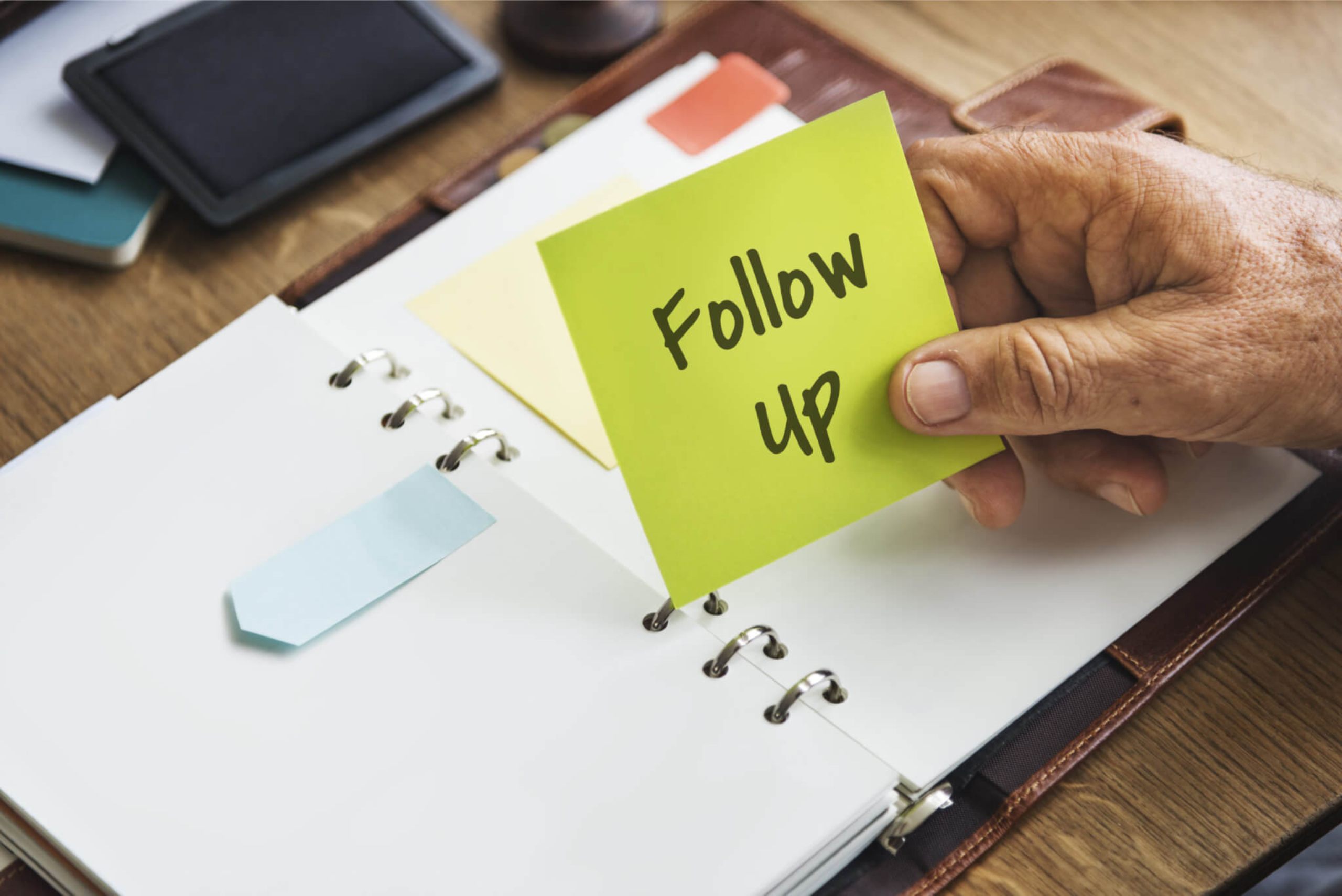
Why Follow-Up Matters
Following up after a job interview is more than just a courtesy; it’s an opportunity to reinforce your interest in the position and leave a lasting impression.
Key Benefits
- Reiterate Interest:
It shows the hiring manager that you are genuinely interested in the role and the company. - Clarify Points:
You can use follow-up to clarify any points or questions that may have arisen during the interview. - Address Concerns:
If you feel you didn’t address a particular concern adequately during the interview, follow-up provides a chance to do so.
When to Send a Follow-Up
Timing is critical when sending a follow-up message.
Ideal Timing
- Thank You Email:
Send a thank-you email within 24 hours of the interview to express appreciation for the opportunity and reiterate your interest. - Follow-Up Questions:
If you have additional questions or need to address specific concerns, send these within a few days of the interview.
Crafting a Thank-You Email
The thank-you email is a critical component of your follow-up strategy.
Elements of a Thank-You Email
- Gratitude:
Begin by expressing your gratitude for the interview opportunity. - Specific Mention:
Mention specific points from the interview that stood out to you or that you found particularly interesting. - Reiteration:
Reiterate your interest in the position and your enthusiasm for joining the team. - Clarifications:
If there were any questions you feel you didn’t answer perfectly, use the thank-you email to clarify or provide additional information. - Professionalism:
Keep the email professional, concise, and free from typos or errors.
Handling Additional Questions
If you have follow-up questions or need to address concerns raised during the interview, approach this with professionalism.
How to Address Questions
- Be Specific:
Clearly state the question or concern you have, referencing the interview context if necessary. - Respect Boundaries:
Ensure your questions are respectful and relevant to the role or company.
The Waiting Game
After the follow-up, you may have to wait for a response.
Patience and Persistence
- Be Patient:
Understand that hiring decisions take time, and it may be several days or weeks before you receive a response. - Follow-Up Timeline:
If you don’t receive a response within a reasonable period (e.g., a week after the expected decision date), it’s acceptable to send a polite follow-up email to inquire about the status.
Frequently Ask Questions
- Five Ways to Prepare for a Job Interview:
- Research the company.
- Understand the job description.
- Practice common interview questions.
- Develop your elevator pitch.
- Dress appropriately.
- How to Introduce Yourself in an Interview:
- Start with your name.
- Provide a brief professional summary.
- Highlight key qualifications and experiences.
- Express enthusiasm for the role.
- How to Impress in an Interview:
- Be well-prepared.
- Showcase relevant skills and experiences.
- Show enthusiasm for the position and company.
- Ask thoughtful questions.
- Follow up with a thank-you email.
- Examples to Prepare for an Interview:
- Behavioral questions (e.g., “Tell me about a time when…”).
- Technical questions related to your field.
- Situational questions.
- Questions about your strengths and weaknesses.
- Questions about your previous experiences and achievements.
- Interview Skills:
- Communication.
- Active listening.
- Problem-solving.
- Adaptability.
- Emotional intelligence.
- Why Should We Hire You?
- Highlight your relevant skills and experiences.
- Explain how you can contribute to the company’s success.
- Showcase your enthusiasm for the role and the company’s mission.
- How to Speak Fluently in an Interview:
- Practice your responses.
- Slow down your speech.
- Use pauses effectively.
- Focus on clarity and articulation.
- How to Speak Confidently in an Interview:
- Prepare thoroughly.
- Maintain eye contact.
- Use positive body language.
- Practice active listening.
- Project your voice clearly.
- How to Attract Talent in an Interview:
- Showcase the company’s culture and values.
- Highlight opportunities for growth.
- Emphasize the team and company’s achievements.
- Be welcoming and responsive during the interview process.
- Why Do You Want This Job?
- Connect the role to your career goals.
- Explain how your skills align with the job requirements.
- Express your interest in the company’s mission and culture.
- What Are Your Weaknesses?
- Choose a weakness that is not critical for the job.
- Discuss how you’re actively working to improve it.
- Show self-awareness and a commitment to growth.
- Smart Interview Technique:
- Specific: Be specific in your responses.
- Measurable: Use concrete examples and metrics.
- Achievable: Discuss realistic goals.
- Relevant: Keep your responses relevant to the question.
- Time-bound: Mention timeframes for accomplishments.
- Salary Expectations:
- Research industry salary standards.
- Consider your experience and qualifications.
- Be prepared to provide a salary range based on your research.
- Why Do You Want to Join Us?
- Highlight specific aspects of the company that attract you.
- Connect your values and career goals with the company’s mission.
- Show enthusiasm for the role and the opportunity it presents.
- Salary Requirements:
- Provide a salary range if possible.
- Base your requirements on industry standards and your qualifications.
- Be open to negotiation.
- The 7 Steps in an Interview:
- Introduction.
- Company and role overview.
- Candidate’s introduction.
- Behavioral questions.
- Technical questions (if applicable).
- Candidate’s questions.
- Conclusion and next steps.
- Bringing Notes to an Interview:
- It’s generally acceptable to bring notes for reference.
- Avoid reading directly from them; use them as a backup.
- Focus on maintaining eye contact and engaging with the interviewer.
- How to Impress an Interviewer in 1 Minute:
- Start with a strong, confident greeting.
- Deliver a concise and enthusiastic elevator pitch.
- Make eye contact and offer a confident handshake.
- Show genuine interest in the role and company.
- Saying You’re Perfect for the Job:
- Emphasize your qualifications and relevant experience.
- Showcase your enthusiasm for the role and company.
- Highlight how your skills align with the job requirements.
- Smiling in an Interview:
- Yes, offering a warm and genuine smile is generally a positive gesture.
- It can help create a friendly and approachable impression.
- However, be mindful of not overdoing it, as excessive smiling may seem insincere.
